Recent Articles
Popular Makes
Body Types
2018 Honda HR-V Road Test and Review
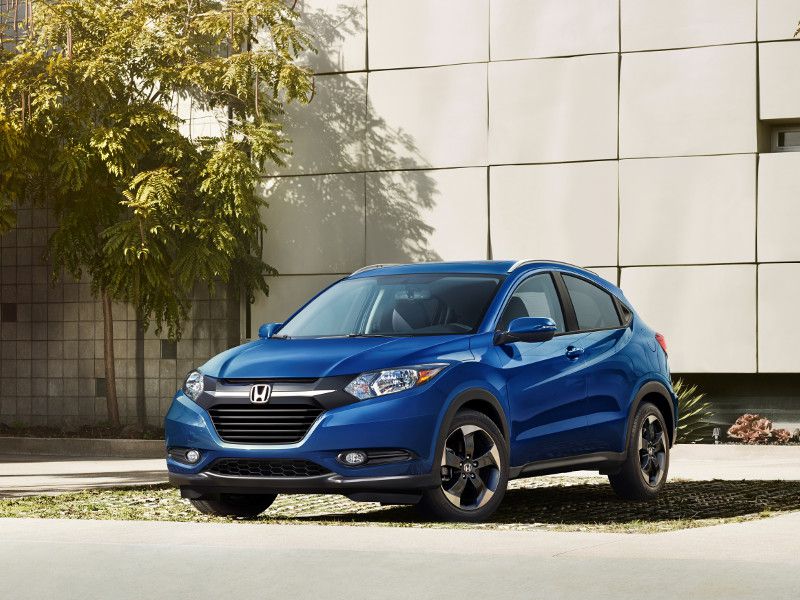
2018 Honda HR V blue ・ Photo by Honda
The Honda HR-V is a subcompact crossover first introduced back in 2016, when it was a new entry in the Honda lineup that slotted in just below the popular CR-V. Subcompact crossovers are growing in popularity thanks to their versatility, and the HR-V is Honda’s attempt to capitalize on this hot market segment.
Subcompact crossovers offer ample room for passengers with the flexibility for cargo, but with a smaller footprint that makes them appealing to those who drive in the city and those with small families. They also have a smaller price tag and better fuel economy than larger crossovers, so they’re a budget-friendly choice. Let’s take a closer look at the 2018 Honda HR-V and see if it’s the right car for you.
Pricing and Trim Levels
The 2018 Honda HR-V is offered in three trim levels, starting with the base LX with front-wheel drive and a six-speed manual transmission at $19,670. The EX trim starts at $21,270 and adds standard features including a power moonroof, heated side mirrors and front seats, automatic climate control, and Honda LaneWatch. It also improves infotainment with a 180-watt six-speaker audio system and a 7-inch touchscreen display.
Sitting at the top of the trim range is the EX-L Navi with a starting price of $25,140. It adds roof rails, a leather-wrapped steering wheel, leather seats, SiriusXM, HD radio, and navigation. There’s a choice of either front-wheel drive or all-wheel drive on every trim. You can also pick from either a six-speed manual transmission or a continuously variable automatic transmission, or CVT, except for on the top trim, which offers only the automatic. All-wheel drive models also have the CVT only.

Photo by Christian Wardlaw
Powertrain
Power for the 2018 Honda HR-V comes from a 1.8-liter four-cylinder engine with 141 horsepower and 127 lb-ft of torque. This engine is paired to either a six-speed manual transmission or a continuously variable automatic transmission, or CVT. The HR-V is a compact vehicle, so it doesn’t need a huge engine, but this one is still a bit too small. It’s slow to react during hard acceleration, making it a challenge to merge into high-speed traffic. Press the gas for an extra bit of speed for highway passing and the HR-V takes its time.
Our test vehicle featured the CVT, and it was noisy. This isn’t unusual with CVTs, and it's something automakers have been working to overcome. Sound-dampening materials that keep the engine noise out of the passenger compartment help — and there simply isn’t enough of it in the HR-V.
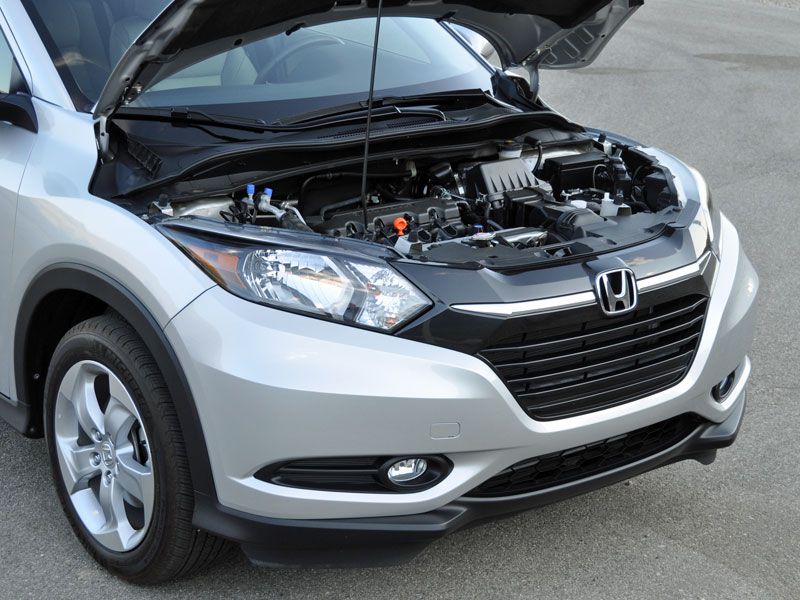
Photo by Christian Wardlaw
Fuel Economy
The small engine in the HR-V might not deliver an exhilarating drive experience, but it does return impressive fuel economy. The numbers vary slightly depending on exactly how you configure the vehicle. With the manual transmission and front-wheel drive, it gets an EPA-estimated 25 mpg in the city, 33 mpg on the highway, and 28 mpg combined. Switch to the automatic and the numbers go up 28 mpg in the city, 34 mpg on the highway, and 31 mpg combined.
All-wheel drive models, available only with the CVT, fall in the middle with an EPA-estimated 27 mpg in the city, 31 mpg on the highway, and 29 mpg combined. These numbers make the HR-V an affordable vehicle to drive even when gas prices go up. They also make it a great choice for commuters or those with long-distance trips in their futures.

Photo by Honda
Ride and Handling
Honda has a reputation for making cars with a smooth, comfortable ride, and the HR-V is no exception to that rule. Its suspension evens out the bumps and even large potholes so that passengers stay comfortable. The HR-V also does a good job of handling rough and uneven pavement, keeping vibration and road noise down to a minimum.
Handling is surprisingly good, and the HR-V was easy to control even on snowy, rutted roads. Subcompact crossovers aren’t known for being particularly sporty and have a reputation for being outright sloppy and difficult to handle. The HR-V doesn’t suffer from those problems. Steering is tight and controlled without being stiff, and traveling down a winding country road is actually fun. It’s not a sports car, but it’s a nice little crossover that’s enjoyable to drive.
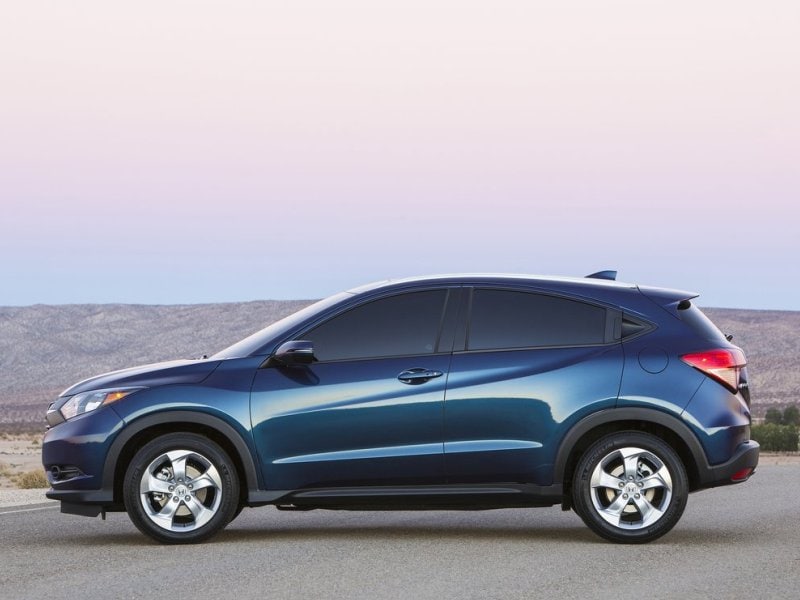
Photo by Honda
Interior
Part of a subcompact crossover’s appeal is its affordability, which means these models don’t usually have fancy interiors. The HR-V isn’t fancy, but it’s still attractive and comfortable. There’s a fine between minimalist and cheap, and Honda manages to stay on the right side of things with the HR-V. Fabric seats are standard with optional heated leather seats on higher trims. There’s a 60/40 split-folding rear seat that provides good support and room for three passengers. Kids will be fine, but it’s best to keep it down to two adults in the back.
Front seats are supportive and only manually adjustable, but don’t let the lack of power seats turn you off. There’s enough of a range that drivers of any height can find a good seating position. The seats are also supportive without being stiff and stay comfortable even on longer drives.
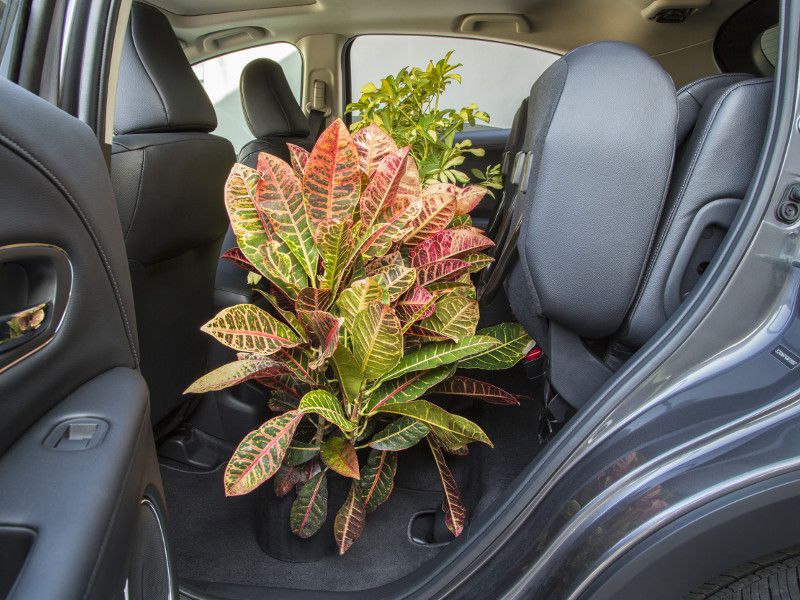
Photo by Honda
Cargo Capacity
The HR-V offers good cargo capacity for a subcompact crossover. There’s 23.2 cubic feet behind the rear seat and 57.6 cubic feet behind the front seats with the rear seat folded. You get a bit more if you opt for a front-wheel drive model: 24.3 and 58.8 cubic feet, respectively. There’s a wide cargo opening, and the load floor is low, which makes it easier to stow heavy or bulky items.
The HR-V also has a unique rear seat configuration that provides an additional option for stowing cargo. Leave the rear seatback upright, and you can fold the seat cushion upward in two sections such that they’re flush against the seatback. This increases the width of the footwells and provides the perfect spot for stowing taller items that you don’t want to rest on their sides all the way in the back of the vehicle.
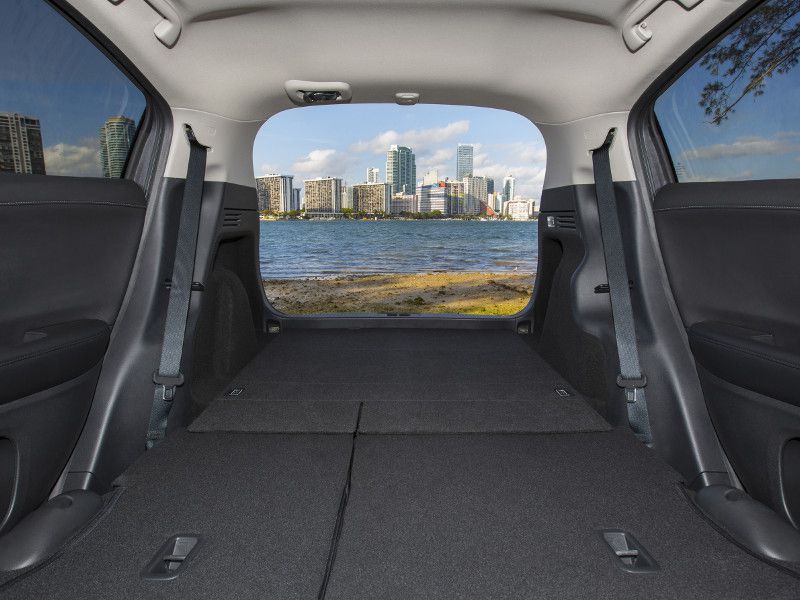
Photo by Honda
Infotainment
The base infotainment system features a 160-watt audio system with four speakers and a 5-inch color LCD screen. The EX and EX-L Navi trims get an upgrade to a six-speaker 180-watt audio system and a 7-inch high-resolution touchscreen. This is a big improvement over the smaller screen offered in the base model. They also have standard HondaLink, Pandora compatibility, and SMS texting. The EX-L Navi gets even more features with satellite-linked navigation with voice recognition, SiriusXM, and HD radio.
The base model's system is limited, but once you get to the top trim, it’s a solid offering. It's easy to use with good sound quality on the EX-L Navi. The one notable infotainment omission is a lack of Apple CarPlay and Android Auto on any trim, which is a big drawback. The HR-V infotainment system isn't as fully featured as it could be, but it does the job.
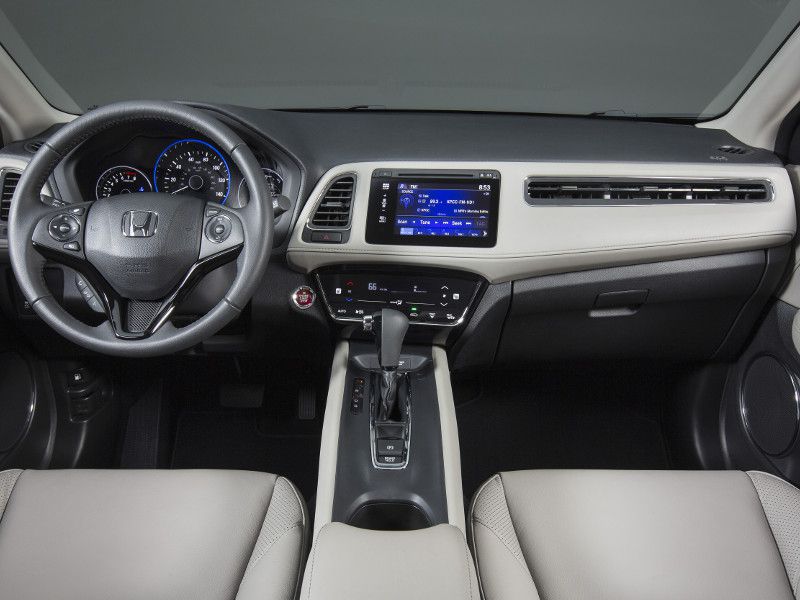
Photo by Honda
Safety
Crash test ratings for the HR-V are good overall. The Insurance Institute for Highway Safety awarded it the top score of Good in all crash tests except for the small front overlap, where it scored one step down with an Acceptable rating. It secured the National Highway Traffic Safety Administration's top score with an overall five-star rating, but with individual four-star ratings for rollover resistance and the frontal crash test.
There is limited safety feature availability on the HR-V. Standard features include a multi-angle rearview camera and daytime running lights. EX and EX-L Navi trims also get LaneWatch. This uses a camera in the passenger side mirror to show the view to the right of the vehicle any time the right turn signal is activated. Advanced safety features, like blind-spot monitors, adaptive cruise control, and automatic emergency braking aren’t available at all, not even as options.
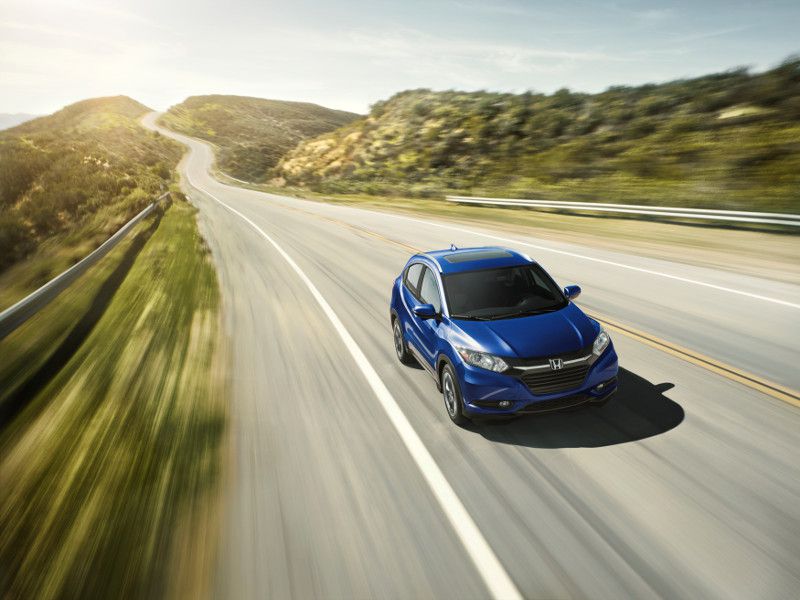
Photo by Honda
Final Thoughts
The 2018 Honda HR-V adds an affordable subcompact crossover to the Honda lineup in a very competitive segment. This is the just-right car for those who want some flexibility for cargo, but who don’t want something big that will up the sticker price and fuel costs. The HR-V is a solid value with good pricing and good fuel economy. There aren’t as many safety features available as there are on some competitors, but it counters this drawback with strong crash test ratings.
It also has a comfortable ride with a roomy cabin. Power is underwhelming, but that’s not why you buy a subcompact crossover. The focus is on affordability and flexibility, and the HR-V delivers both. Whether it's people or cargo, daily commutes or summer road trips, the HR-V is an attractive choice for those in the market for a subcompact crossover.
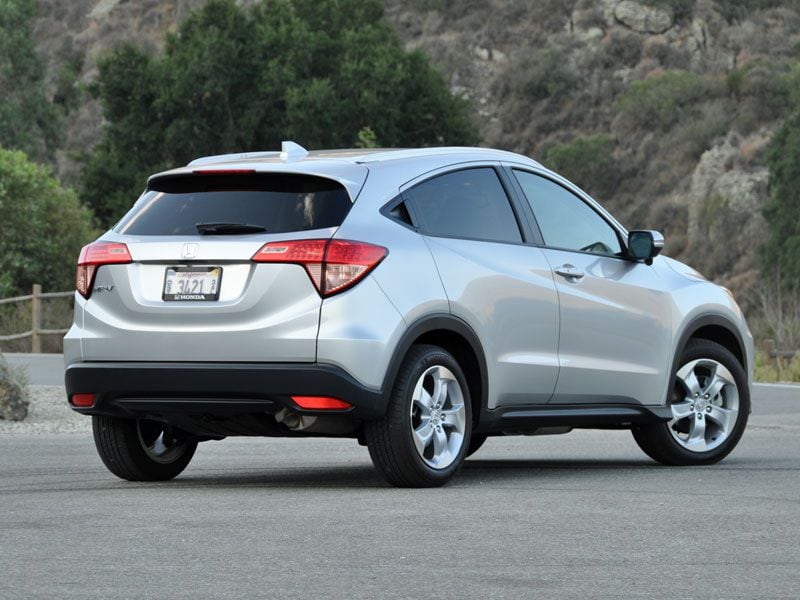
Photo by Christian Wardlaw